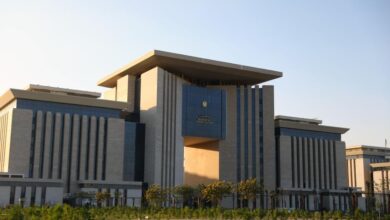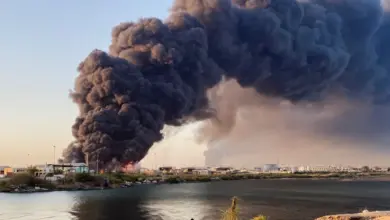
VIENNA (Reuters) – Iran has stayed within the main restrictions of its nuclear deal, a quarterly report by the UN atomic watchdog indicated on Friday, at a time when Tehran is threatening to break the rules in future in response to new US sanctions.
The report found that Iran was abiding by the main terms of its 2015 deal with world powers, including the most sensitive issues of its stockpile of enriched uranium and level of enrichment.
The report did however flag up questions about the number of advanced centrifuges Iran is allowed, which is loosely defined in the deal.
A year after Washington abandoned the landmark deal, which curbed Tehran’s nuclear program in return for the lifting of sanctions, European powers are trying to keep it in place.
The report by the International Atomic Energy Agency comes at a particularly sensitive time, with Washington having sharply tightened sanctions on Tehran this month, and Iran threatening to take steps in response that could eventually bring it out of compliance with the pact.
The administration of President Donald Trump says the deal negotiated by his predecessor Barack Obama does not go far enough to curb Iran’s nuclear and missile programs.
After reintroducing sanctions last year, the Trump administration has ordered all countries to halt all imports of Iranian oil from this month. Tehran has responded by threatening to increase its enrichment of uranium, although it says it has not violated the agreement so far.
Washington has also raised the prospect of military confrontation in recent weeks, blaming Iran for attacks on oil tankers and announcing the deployment of extra forces to the Gulf. Iran denies any link to attacks on shipping and says the US military moves are “psychological warfare”.
The IAEA report said its staff had access “to all the sites and locations in Iran which it needed to visit”.
Inspectors found that Iran’s stock of enriched uranium was well below the limit set by the deal, as of May 20. That last date covered by the report is also the day Iran said it had increased the rate at which it enriches uranium, meaning any acceleration will appear only in the next report.
The IAEA said Iran had installed 33 advanced IR-6 centrifuges, machines that can enrich uranium, although only 10 had been tested with uranium feedstock so far. The deal allows Iran to test up to 30, but only after 8 1/2 years have passed. The limit before then is a “grey area”, diplomats say.
“Technical discussions in relation to the IR-6 centrifuges are ongoing,” the report said. A senior diplomat, asked about the nature of those discussions, declined to elaborate.
While Iran has stayed within the deal’s main limits over the past three years, it has breached a cap on its heavy water stock within the first year, although this is acknowledged by diplomats as a comparatively minor issue. Diplomats also say it has dragged its feet on allowing access to some sites, without explicitly violating the requirements of the deal.
Reporting by Francois Murphy; Editing by Peter Graff
Image: The Iranian flag flutters in front the International Atomic Energy Agency (IAEA) headquarters in Vienna, Austria March 4, 2019. REUTERS/Leonhard Foeger




